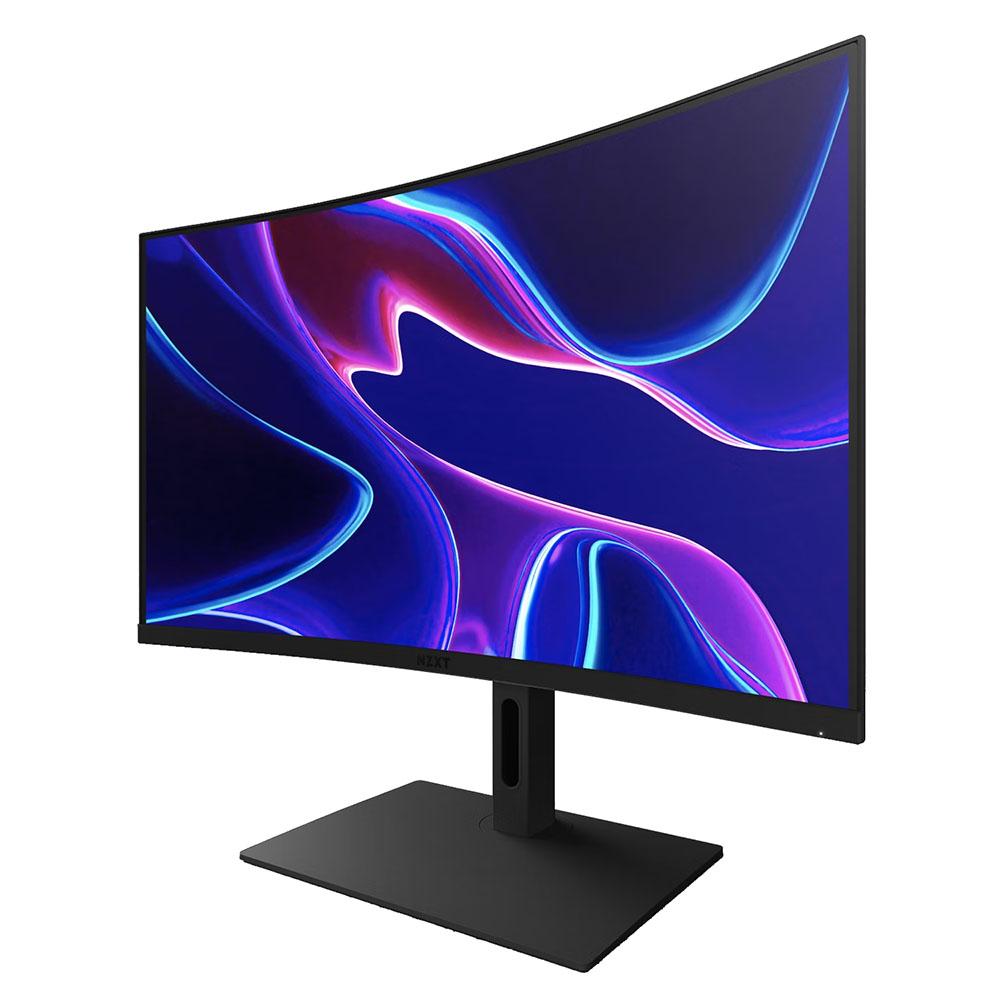Why you can trust Tom's Hardware
The QHD, 165 Hz category is still the best bang for the buck in gaming monitors. For $400-500, you get a capable screen with Adaptive-Sync, HDR and extended color. And it can maintain higher frame rates than an Ultra HD (4K) display that has the visual effect of higher resolution when things are moving quickly across the screen. And you can save a bit of money on the video card. You won’t need a bleeding edge board to top 150fps at QHD resolution.
Adding to the QHD performance advantage is the availability of VA panels, which has yet to proliferate in the Ultra HD realm. VA delivers at least three times the contrast of IPS, thanks to its superior black levels. This makes the picture more colorful and more three-dimensional. Many of the monitors in this category are VA, and I’m glad that NZXT has chosen this route.
The Canvas 32Q is a solid performer. Though its overdrive could be a little more aggressive, it has good motion resolution, flawless Adaptive-Sync and low input lag. It is one of the quicker budget monitors I’ve tested and will deliver an excellent experience for most gamers. The backlight strobe effectively reduces motion blur, but like most monitors with this feature, there is a bit of phasing involved and a reduction in brightness. One thing that would help there is a pulse width adjustment.
Though I could not calibrate the Canvas 32Q effectively, its color accuracy is decent enough. Aside from some minor green errors in the grayscale tracking, all that needs to be done is to change the gamma preset to 2.4. The gamut is nearly perfect, and I recorded a very low average error in that test. DCI-P3 coverage is about average, which is to say very good at just over 87%. This is aided perceptually by the panel’s superb contrast of nearly 4,000:1.
It appears that at the moment, the only way to buy a Canvas 32Q is from NZXT’s website. It’s unfortunate that you can’t audition one before purchase, but other manufacturers are in the same situation, like Monoprice and Dough (formerly Eve), who also make some very good displays. But in my testing and experience, the Canvas 32Q is a monitor that would make nearly anyone happy and is highly recommended.
Get Tom's Hardware's best news and in-depth reviews, straight to your inbox.

Christian Eberle is a Contributing Editor for Tom's Hardware US. He's a veteran reviewer of A/V equipment, specializing in monitors. Christian began his obsession with tech when he built his first PC in 1991, a 286 running DOS 3.0 at a blazing 12MHz. In 2006, he undertook training from the Imaging Science Foundation in video calibration and testing and thus started a passion for precise imaging that persists to this day. He is also a professional musician with a degree from the New England Conservatory as a classical bassoonist which he used to good effect as a performer with the West Point Army Band from 1987 to 2013. He enjoys watching movies and listening to high-end audio in his custom-built home theater and can be seen riding trails near his home on a race-ready ICE VTX recumbent trike. Christian enjoys the endless summer in Florida where he lives with his wife and Chihuahua and plays with orchestras around the state.
-
digitalgriffin It's specs and performance remind me of the panel used by the dell s3220dgf. But the dell is a lot cheaper.Reply -
WINTERLORD your link is broken that monitor isnt yet listed on amazon, also yall wrote a news clip bout monitor sales being down does this mean monitors will get more expinsive or will they get cheaper?Reply -
dk382 I think it's time Tom's Hardware does more comprehensive response time testing than the single value they're showing. 0 - 100% doesn't even come close to showing the whole story with response times. What are the other black and near-black rise times, for instance? Black or near-black to other near-black shades are often slower than 0 - 100% on VA panels, and you get smearing in dark shades as a result, which is something not even mentioned in this review.Reply
